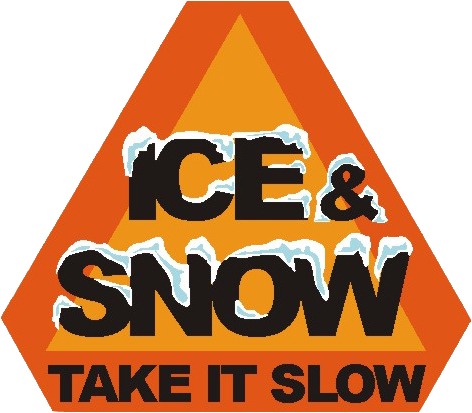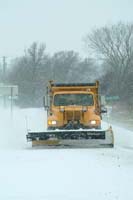Holiday Pet Safety
The parties, meals and decorations which excite all of us during the holidays can be a hazard to your pet. This doesn’t mean you have to change or cancel your festivities, just include the proper planning and precautions for the safety of your pet. While each pet is different here is a list of the most obvious things to plan for a safe holiday season for your pet.
Holiday Foods need to be kept out of your pet’s reach. Your pet finds the food just as irresistible as you do and will indulge as the opportunity presents itself. Remember, chocolate, alcohol and other foods that may be good for us can be toxic to your pet.
Many of our decorations use electric or power cords. Many pets think power cords are great chew toys. Whether it’s the desire to see what the cord tastes like and having a shocking experience or the rough play running around the house and tripping making the tree fall down, cords can get in the way and wreak havoc if not properly secure. All lighting
and electric cords need to be hidden or secured from your pet’s access. Tuck your cords securely against the wall so they won’t be played with or, if necessary, spray the cords with an aversion spray. Something with pepper is always a good deterrent.
Make sure your pet has their own safe spot. Whether it be in their crate if they are crate trained or in their own pet bed in the living room, don’t make their safe spot the new place for the tree or other holiday items. Pets are creatures of habit and thrive on routine, let them know that even with all the fun, this is still their home and they still have their designated safe spot.
Plants we love and decorate with for the holidays can be dangerous to your pets. Mistletoe, holly, lilies and poinsettias call all be poisonous and affect each pet in different ways. Make
sure your plants are placed out of reach as to not be eaten.
With guests and family visiting during all the festivities, the chance of your pet getting out increases. This makes it very important for your pet to have up to date tags and your pet’s
microchip information is up to date. You may have moved or contact information changed and not updated your pet’s chip.
Nothing dampens the holiday festivity mood than having a sick or injured pet that needs to be taken to the emergency pet hospital. Just as a precaution make sure you know where you
emergency pet clinic is located near you.
WINTER DRIVING SAFETY TIPS
INDOT wants you and your family to stay safe on the roads this winter. By following these tips and advice, you’ll be ready for winter driving. And don’t forget: Ice and Snow, Take it Slow!
Be Prepared!
 Knowledge: Before leaving home, find out about the driving conditions. Safe drivers know the weather, and their limits. If the weather is bad remember, Ice and Snow, Take it Slow, or just don’t go.
Knowledge: Before leaving home, find out about the driving conditions. Safe drivers know the weather, and their limits. If the weather is bad remember, Ice and Snow, Take it Slow, or just don’t go.- Clear: Remove any snow on your vehicle’s windows, lights, brake lights and signals. Make sure you can see and be seen.
- Inspect: Check your vehicle’s tires, wiper blades, fluids, lights, belts and hoses. A breakdown is bad on a good day and dangerous on a bad-weather day.
- Time: Leave plenty of time to reach your destination safely. It’s not worth putting yourself and others in a dangerous situation just to be on time.
Caution: Slippery When Wet!
When driving in winter weather, watch out! Mother Nature has some tricks up her sleeve in the winter. Here are some to be on the look out for:
- First Snow or Ice: Drivers often aren’t prepared for winter driving and forget to take it slow. Remember to drive well below the posted speed limit and leave plenty of room between cars.
- Black Ice: Roads that seem dry may actually be slippery – and dangerous. Take it slow when approaching intersections, off-ramps, bridges or shady areas – all are hot spots for black ice. Remember, Ice and Snow, Take it Slow.
- Limited Visibility: Stay attentive and reduce speed. Know what’s going on around you.
- Four-Wheel Drive: On snow and ice, go slowly, no matter what type of vehicle you drive. Even if you have an SUV with four-wheel drive you may not be able to stop any faster, or maintain control any better, once you lose traction. Four-wheel drive may get you going faster, but it won’t help you stop sooner.
Staying Safe Around Snowplows
 In the winter, INDOT snowplow drivers are out on the roads to keep them clear of snow and ice and keep you safe. Here’s what you need to know about driving around snowplows:
In the winter, INDOT snowplow drivers are out on the roads to keep them clear of snow and ice and keep you safe. Here’s what you need to know about driving around snowplows:
- Distance: Give snowplows room to work. The plows are wide and can cross the centerline or shoulder. Don’t tailgate and try not to pass. If you must pass, take extreme caution and beware of the snow cloud.
- Speed: Snowplows travel below the posted speed limit. Be patient. Allow plenty of time to slow down. Remember, Ice and Snow, Take it Slow.
- Vision: A snowplow operator’s field of vision is restricted. You may see them, but they don’t always see you. Keep your distance and watch for sudden stops or turns.
Proceed with Caution!
- Speed: The faster you’re going, the longer it will take to stop. When accelerating on snow or ice, take it slow to avoid slipping or sliding. Ice and Snow, Take it Slow.
- Distance: Give yourself space. It takes extra time and extra distance to bring your car to a stop on slick and snowy roads. Leave extra room between you and the vehicle in front of you.
- Brake: Brake early, brake slowly, brake correctly and never slam on the brakes. If you have anti-lock brakes, press the pedal down firmly and hold it. If you don’t have anti-lock brakes, gently pump the pedal. Either way, give yourself plenty of room to stop.
- Control: When driving on ice and snow, do not use cruise control and avoid abrupt steering maneuvers. When merging into traffic, take it slow. Sudden movements can cause your vehicle to slide.
- Vision: Be aware of what’s going on well ahead of you. Actions by other vehicles will alert you to problems more quickly, and give you that split-second of extra time to react safely.










